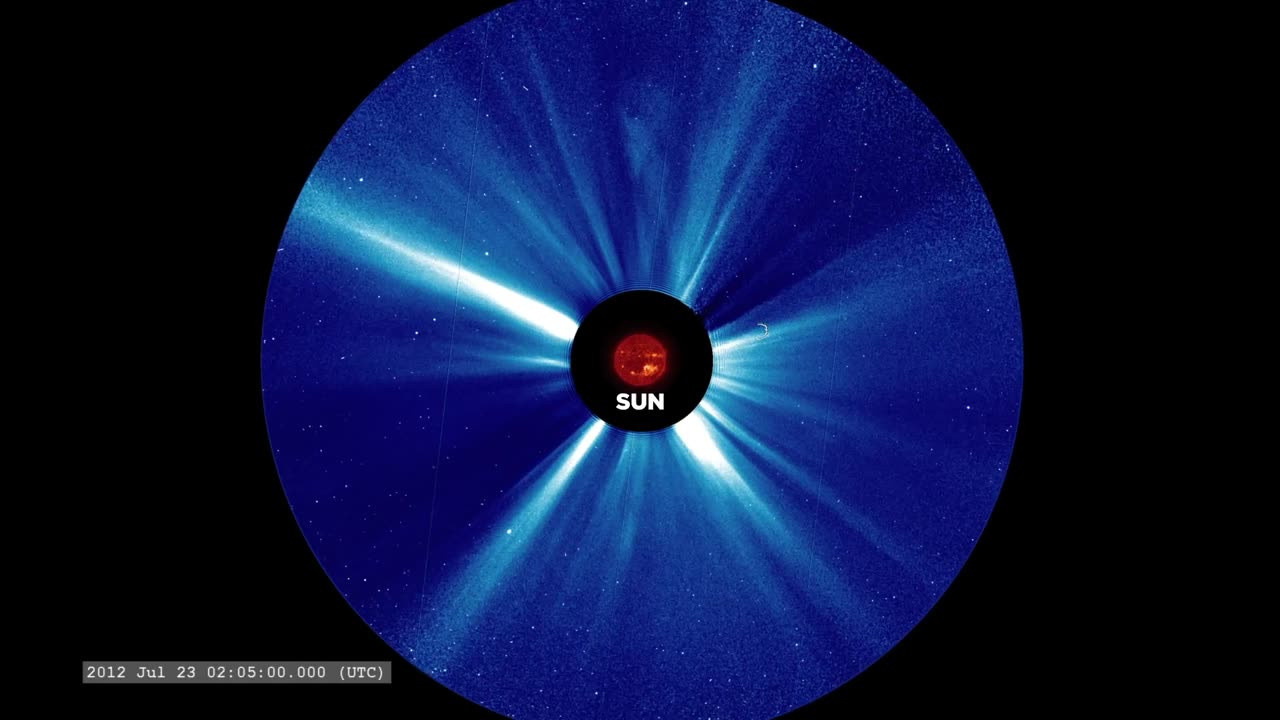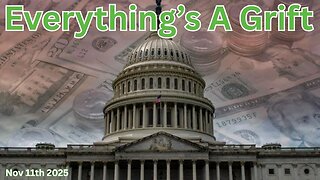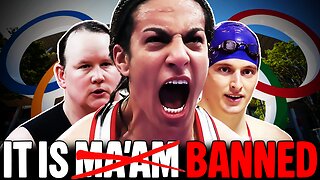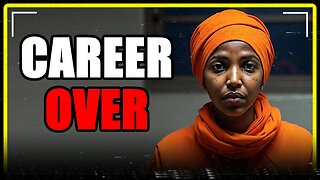Premium Only Content

How NASA Will Protect Astronauts From Space Radiation
How NASA Will Protect Astronauts From Space Radiation How NASA Will Protect Astronauts From Space Radiation How NASA Will Protect Astronauts From Space Radiation How NASA Will Protect Astronauts From Space Radiation How NASA Will Protect Astronauts From Space Radiation How NASA Will Protect Astronauts From Space Radiation How NASA Will Protect Astronauts From Space Radiation How NASA Will Protect Astronauts From Space Radiation How NASA Will Protect Astronauts From Space Radiation How NASA Will Protect Astronauts From Space Radiation How NASA Will Protect Astronauts From Space Radiation How NASA Will Protect Astronauts From Space Radiation How NASA Will Protect Astronauts From Space Radiation How NASA Will Protect Astronauts From Space Radiation How NASA Will Protect Astronauts From Space Radiation How NASA Will Protect Astronauts From Space Radiation How NASA Will Protect Astronauts From Space Radiation How NASA Will Protect Astronauts From Space Radiation How NASA Will Protect Astronauts From Space Radiation How NASA Will Protect Astronauts From Space Radiation How NASA Will Protect Astronauts From Space Radiation How NASA Will Protect Astronauts From Space Radiation How NASA Will Protect Astronauts From Space Radiation How NASA Will Protect Astronauts From Space Radiation How NASA Will Protect Astronauts From Space Radiation How NASA Will Protect Astronauts From Space Radiation August 1972, as NASA scientist Ian Richardson remembers it, was hot. In Surrey, England, where he grew up, the fields were brown and dry, and people tried to stay out of the Sun, indoors and televisions on. But for several days that month, his TV picture kept breaking up. “Do not adjust your set,” he recalls the BBC announcing. “Heat isn’t causing the interference. It’s sunspots.” The same sunspots that disrupted the television signals led to enormous solar flares — powerful bursts of radiation from the Sun — Aug. 4-7 that year. Between the Apollo 16 and 17 missions, the solar eruptions were a near miss for lunar explorers. Had they been in orbit or on the Moon’s surface, they would have sustained dangerous levels of solar radiation sparked by the eruptions. Today, the Apollo-era flares serve as a reminder of the threat of radiation exposure for technology and astronauts in space. Understanding and predicting solar eruptions is crucial for safe space exploration. Almost 50 years since those 1972 storms, the data, technology and resources available to NASA have improved, enabling advancements towards space weather forecasts and astronaut protection — key to NASA’s Artemis program to return astronauts to the Moon. Music credits: “Boreal Moment” by Benoit Scarwell [SACEM]; “Sensory Questioning”, “Natural Time Cycles”, “Emerging Designer”, and “Experimental Design” by Laurent Dury [SACEM]; “Superluminal” by Lee Groves [PRS], Peter George Marett [PRS] from Killer Tracks Read more: https://www.nasa.gov/feature/goddard/2019/how-nasa-protects-astronauts-from-space-radiation-at-moon-mars-solar-cosmic-rays This video is public domain and along with other supporting visualizations can be downloaded from the Scientific Visualization Studio at: http://svs.gsfc.nasa.gov/13275 If you liked this video, subscribe to the NASA Goddard YouTube channel: http://www.youtube.com/NASAExplorer Follow NASA’s Goddard Space Flight Center · Instagram http://www.instagram.com/nasagoddard · Twitter http://twitter.com/NASAGoddard · Twitter http://twitter.com/NASAGoddardPix · Facebook: http://www.facebook.com/NASA.GSFC · Flickr http://www.flickr.com/photos/gsfc
August 1972, as NASA scientist Ian Richardson remembers it, was hot. In Surrey, England, where he grew up, the fields were brown and dry, and people tried to stay out of the Sun, indoors and televisions on. But for several days that month, his TV picture kept breaking up. “Do not adjust your set,” he recalls the BBC announcing. “Heat isn’t causing the interference. It’s sunspots.” The same sunspots that disrupted the television signals led to enormous solar flares — powerful bursts of radiation from the Sun — Aug. 4-7 that year. Between the Apollo 16 and 17 missions, the solar eruptions were a near miss for lunar explorers. Had they been in orbit or on the Moon’s surface, they would have sustained dangerous levels of solar radiation sparked by the eruptions. Today, the Apollo-era flares serve as a reminder of the threat of radiation exposure for technology and astronauts in space. Understanding and predicting solar eruptions is crucial for safe space exploration. Almost 50 years since those 1972 storms, the data, technology and resources available to NASA have improved, enabling advancements towards space weather forecasts and astronaut protection — key to NASA’s Artemis program to return astronauts to the Moon. Music credits: “Boreal Moment” by Benoit Scarwell [SACEM]; “Sensory Questioning”, “Natural Time Cycles”, “Emerging Designer”, and “Experimental Design” by Laurent Dury [SACEM]; “Superluminal” by Lee Groves [PRS], Peter George Marett [PRS] from Killer Tracks Read more: https://www.nasa.gov/feature/goddard/2019/how-nasa-protects-astronauts-from-space-radiation-at-moon-mars-solar-cosmic-rays This video is public domain and along with other supporting visualizations can be downloaded from the Scientific Visualization Studio at: http://svs.gsfc.nasa.gov/13275 If you liked this video, subscribe to the NASA Goddard YouTube channel: http://www.youtube.com/NASAExplorer Follow NASA’s Goddard Space Flight Center · Instagram http://www.instagram.com/nasagoddard · Twitter http://twitter.com/NASAGoddard · Twitter http://twitter.com/NASAGoddardPix · Facebook: http://www.facebook.com/NASA.GSFC · Flickr http://www.flickr.com/photos/gsfc
August 1972, as NASA scientist Ian Richardson remembers it, was hot. In Surrey, England, where he grew up, the fields were brown and dry, and people tried to stay out of the Sun, indoors and televisions on. But for several days that month, his TV picture kept breaking up. “Do not adjust your set,” he recalls the BBC announcing. “Heat isn’t causing the interference. It’s sunspots.” The same sunspots that disrupted the television signals led to enormous solar flares — powerful bursts of radiation from the Sun — Aug. 4-7 that year. Between the Apollo 16 and 17 missions, the solar eruptions were a near miss for lunar explorers. Had they been in orbit or on the Moon’s surface, they would have sustained dangerous levels of solar radiation sparked by the eruptions. Today, the Apollo-era flares serve as a reminder of the threat of radiation exposure for technology and astronauts in space. Understanding and predicting solar eruptions is crucial for safe space exploration. Almost 50 years since those 1972 storms, the data, technology and resources available to NASA have improved, enabling advancements towards space weather forecasts and astronaut protection — key to NASA’s Artemis program to return astronauts to the Moon. Music credits: “Boreal Moment” by Benoit Scarwell [SACEM]; “Sensory Questioning”, “Natural Time Cycles”, “Emerging Designer”, and “Experimental Design” by Laurent Dury [SACEM]; “Superluminal” by Lee Groves [PRS], Peter George Marett [PRS] from Killer Tracks Read more: https://www.nasa.gov/feature/goddard/2019/how-nasa-protects-astronauts-from-space-radiation-at-moon-mars-solar-cosmic-rays This video is public domain and along with other supporting visualizations can be downloaded from the Scientific Visualization Studio at: http://svs.gsfc.nasa.gov/13275 If you liked this video, subscribe to the NASA Goddard YouTube channel: http://www.youtube.com/NASAExplorer Follow NASA’s Goddard Space Flight Center · Instagram http://www.instagram.com/nasagoddard · Twitter http://twitter.com/NASAGoddard · Twitter http://twitter.com/NASAGoddardPix · Facebook: http://www.facebook.com/NASA.GSFC · Flickr http://www.flickr.com/photos/gsfc
August 1972, as NASA scientist Ian Richardson remembers it, was hot. In Surrey, England, where he grew up, the fields were brown and dry, and people tried to stay out of the Sun, indoors and televisions on. But for several days that month, his TV picture kept breaking up. “Do not adjust your set,” he recalls the BBC announcing. “Heat isn’t causing the interference. It’s sunspots.” The same sunspots that disrupted the television signals led to enormous solar flares — powerful bursts of radiation from the Sun — Aug. 4-7 that year. Between the Apollo 16 and 17 missions, the solar eruptions were a near miss for lunar explorers. Had they been in orbit or on the Moon’s surface, they would have sustained dangerous levels of solar radiation sparked by the eruptions. Today, the Apollo-era flares serve as a reminder of the threat of radiation exposure for technology and astronauts in space. Understanding and predicting solar eruptions is crucial for safe space exploration. Almost 50 years since those 1972 storms, the data, technology and resources available to NASA have improved, enabling advancements towards space weather forecasts and astronaut protection — key to NASA’s Artemis program to return astronauts to the Moon. Music credits: “Boreal Moment” by Benoit Scarwell [SACEM]; “Sensory Questioning”, “Natural Time Cycles”, “Emerging Designer”, and “Experimental Design” by Laurent Dury [SACEM]; “Superluminal” by Lee Groves [PRS], Peter George Marett [PRS] from Killer Tracks Read more: https://www.nasa.gov/feature/goddard/2019/how-nasa-protects-astronauts-from-space-radiation-at-moon-mars-solar-cosmic-rays This video is public domain and along with other supporting visualizations can be downloaded from the Scientific Visualization Studio at: http://svs.gsfc.nasa.gov/13275 If you liked this video, subscribe to the NASA Goddard YouTube channel: http://www.youtube.com/NASAExplorer Follow NASA’s Goddard Space Flight Center · Instagram http://www.instagram.com/nasagoddard · Twitter http://twitter.com/NASAGoddard · Twitter http://twitter.com/NASAGoddardPix · Facebook: http://www.facebook.com/NASA.GSFC · Flickr http://www.flickr.com/photos/gsfc
August 1972, as NASA scientist Ian Richardson remembers it, was hot. In Surrey, England, where he grew up, the fields were brown and dry, and people tried to stay out of the Sun, indoors and televisions on. But for several days that month, his TV picture kept breaking up. “Do not adjust your set,” he recalls the BBC announcing. “Heat isn’t causing the interference. It’s sunspots.” The same sunspots that disrupted the television signals led to enormous solar flares — powerful bursts of radiation from the Sun — Aug. 4-7 that year. Between the Apollo 16 and 17 missions, the solar eruptions were a near miss for lunar explorers. Had they been in orbit or on the Moon’s surface, they would have sustained dangerous levels of solar radiation sparked by the eruptions. Today, the Apollo-era flares serve as a reminder of the threat of radiation exposure for technology and astronauts in space. Understanding and predicting solar eruptions is crucial for safe space exploration. Almost 50 years since those 1972 storms, the data, technology and resources available to NASA have improved, enabling advancements towards space weather forecasts and astronaut protection — key to NASA’s Artemis program to return astronauts to the Moon. Music credits: “Boreal Moment” by Benoit Scarwell [SACEM]; “Sensory Questioning”, “Natural Time Cycles”, “Emerging Designer”, and “Experimental Design” by Laurent Dury [SACEM]; “Superluminal” by Lee Groves [PRS], Peter George Marett [PRS] from Killer Tracks Read more: https://www.nasa.gov/feature/goddard/2019/how-nasa-protects-astronauts-from-space-radiation-at-moon-mars-solar-cosmic-rays This video is public domain and along with other supporting visualizations can be downloaded from the Scientific Visualization Studio at: http://svs.gsfc.nasa.gov/13275 If you liked this video, subscribe to the NASA Goddard YouTube channel: http://www.youtube.com/NASAExplorer Follow NASA’s Goddard Space Flight Center · Instagram http://www.instagram.com/nasagoddard · Twitter http://twitter.com/NASAGoddard · Twitter http://twitter.com/NASAGoddardPix · Facebook: http://www.facebook.com/NASA.GSFC · Flickr http://www.flickr.com/photos/gsfc
-
 LIVE
LIVE
Graham Allen
1 hour agoLibs Are SEETHING Over Shutdown Ending!! They’re Turning On Each other!! + Trump Calls Out MTG!!
2,684 watching -
 LIVE
LIVE
Wendy Bell Radio
5 hours agoEverything’s A Grift
7,312 watching -
 12:03
12:03
Bearing
3 hours agoTransgender Women BANNED From the Olympics 🦀
61410 -
 1:10:48
1:10:48
Chad Prather
9 hours agoPeace That Walks Through Walls: Finding Faith in a Fearful World
57.6K12 -
 LIVE
LIVE
LFA TV
12 hours agoLIVE & BREAKING NEWS! | TUESDAY 11/11/25
3,381 watching -
 8:27
8:27
MattMorseTV
16 hours ago $20.76 earnedIlhan Omar IMPLICATED in $250,000,000 FRAUD RING.
37.2K132 -
 1:58:13
1:58:13
The Chris Salcedo Show
13 hours ago $4.71 earnedOur Vets Fought To Turn Over Our Country To Marxists & Leftists?
14.5K1 -
 15:11
15:11
Cash Jordan
17 hours agoIllegals ‘Force Out’ NYC Millionaires… "Communist" Mayor FREAKS as RESIDENTS LEAVE
41.7K29 -
 43:03
43:03
RiftTV
9 hours agoLeftists Scheme To Destroy the Economy | Guest: Brad Miller | DC Dive
30.5K5 -
 6:52
6:52
ThinkStory
17 hours agoThe INSANE Pennywise Daughter Theory - IT: Welcome to Derry
22.8K